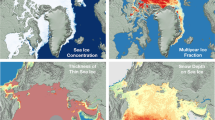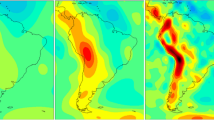Abstract
Reflectance measurements of both the visible and infrared bands of passive remote sensing sensors are widely used to retrieve aerosol optical depth (AOD) information. This is performed commonly for data obtained over both ocean and land, and these measurements allow for the off line development of a lookup table using radiative transfer models. Owing to molecular and aerosol effects, the reflected light received by the sensor is usually highly polarized. The linear polarization effect may be up to 100%, and the polarization factor of a sensor optical system will change the total intensity as well as the polarization status of the signal reaching the detector. The detector response will be different when the incident light polarization status changes, even if the total intensity remains constant. However, if the polarization calibration is neglected, it will cause obvious errors in the aerosol data retrieval. This is especially true for aerosol optical depth retrieval over an ocean. This measurement relies directly on the reflectance output of the sensor. Cases involving land surfaces are not discussed herein because the inhomogeneous properties conceal the error due to polarization. Taking the 550 and 860 nm bands as examples, the difference between the real top-of-atmosphere (TOA) reflectance and the reflectance reaching the detector is calculated using three different sensor polarization standards according to the Sea-viewing Wide Field-of-view Sensor (SeaWiFS) and Moderate Resolution Imaging Spectroradiometer (MODIS) standards. The differences in AOD retrieval are also demonstrated using the lookup table developed previously from a vector radiative transfer code. The results reveal that under a normal situation in which the AOD is 0.15, the maximum AOD retrieval error could reach 0.04 in 550 nm but only 0.02 in 860 nm for the dust aerosol model. For the soot aerosol model, the maximum AOD retrieval error is 0.1 in 550 nm and 0.12 in 860 nm, indicating that the lack of polarization calibration will lead to large errors in aerosol retrieval over an ocean.
Similar content being viewed by others
References
Cox C, Munk W. 1954. Measurement of the roughness of the sea surface from photographs of the suns glitter. J Opt Soc Am B, 44: 838–850
Chowdhary J, Cairns B, Mishchenko M, et al. 2001. Retrieval of aerosol properties over the ocean using multispectral and multiangle photopolarimetric measurements from the Research Scanning Polarimeter. Geophys Res Lett, 28: 243–246
Deuze J L, Bre’on F M, Devaux C, et al. 2001. Remote sensing of aerosols over land surfaces from POLDER-ADEOS-1 polarized measurements. J Geophys Res, 106: 4913–4926
Dubovik O, Sinyuk A, Lapyonok T, et al. 2006. Application of spheroid models to account for aerosol particle nonsphericity in remote sensing of desert dust. J Geophys Res, 111: D11208
Geogdzhayev I V, Mishchenko M I, Rossow W B, et al. 2002. Global two-channel AVHRR retrievals of aerosol properties over the ocean for the period of NOAA-9 observations and preliminary retrievals using NOAA-7 and NOAA-11 data. J Atmos Sci, 59: 262–278
Guo J P, Zhang X Y, Wu Y R, et al. 2011. Spatio-temporal variation trends of satellite-based aerosol optical depth in China during 1980–2008. Atmos Environ, 45: 6802–6811
Ignatov A, Stowe L. 2002. Aerosol retrievals from individual AVHRR channels. Part I: Retrieval algorithm and transition from dave to 6S radiative transfer model. J Atmos Sci, 59: 313–334
Jiang F Q, Liu X, Huang T, et al. 2012. Regional modeling of secondary organic aerosol over China using WRF/Chem. J Aerosol Sci, 43: 57–73
Lee K, Li Z, Kim Y J, et al. 2009. Atmospheric aerosol monitoring from satellite observations: A history of three decades. Atmospheric and Biological Environmental Monitoring. Amsterdam: Springer. 13–38
Litvinov P O, Cairns B, Mishchenko M I, et al. 2010. Reflection models for soil and vegetation surfaces from multiple-viewing angle photopolarimetric measurements. J Quant Spectrosc Radiat Transfer, 111: 529–539
Li Z Q, Niu F, Lee K H, et al. 2007. Validation and understanding of moderate resolution imaging spectroradiometer aerosol products (C5) using ground-based measurements from the handheld Sun photometer network in China. J Geophys Res, 112: D22S07
Mishchenko M I, Lacis A A, Travis L D. 1994. Errors induced by the neglect of polarization in radiance calculations for Rayleigh-scattering atmospheres. J Quant Spectrosc Radiat Transfer, 51: 491–510
Omar A H, Winker D M, Won J G. 2004. Aerosol models for the CALIPSO lidar inversion algorithms. Remote Sensing Int Soc Optics Photonics. 153: 164
Remer L A, Kaufman Y J, Tanre D, et al. 2005. The MODIS aerosol algorithm, products, and validation. J Atmos Sci, 62: 947–973
Sun W B, Liu Z Y, Videen G, et al. 2013. For the depolarization of linearly polarized light by smoke particles. J Quant Spectrosc Radiat Transfer, 122: 233–237
Waquet F B, Cairns K, Knobelspiesse J, et al. 2009. Polarimetric remote sensing of aerosols over land. J Geophys Res, 114: D01206
Wang T H, Huang J P. 2009. A method for estimating optical properties of dusty cloud. Chin Opt Lett, 7: 368–372
Xu J, Li C, Shi H, et al. 2011. Analysis on the impact of aerosol optical depth on surface solar radiation in the Shanghai megacity, China. Atmos Chem Phys, 11: 3281–3289
Author information
Authors and Affiliations
Corresponding author
Rights and permissions
About this article
Cite this article
Liu, T., Chi, T. & Chen, W. Effects of polarization calibration on aerosol optical depth retrieval: An ocean case sensitivity analysis. Sci. China Earth Sci. 58, 939–948 (2015). https://doi.org/10.1007/s11430-014-5036-8
Received:
Accepted:
Published:
Issue Date:
DOI: https://doi.org/10.1007/s11430-014-5036-8




